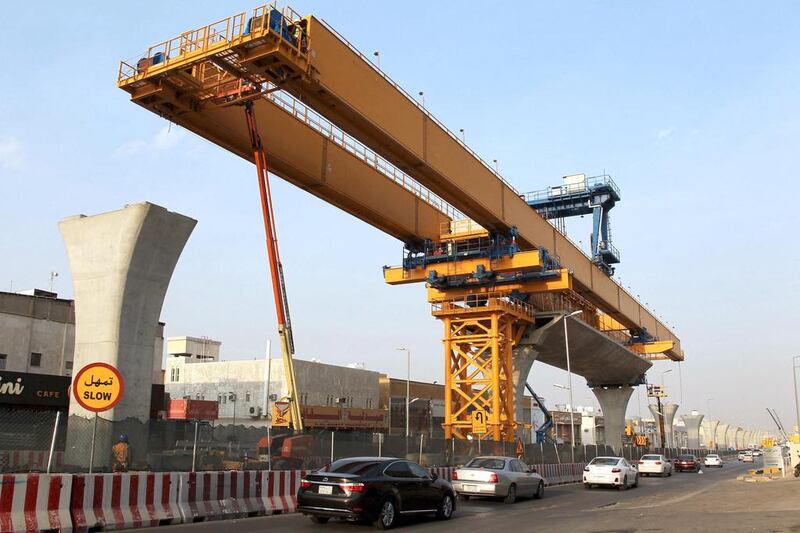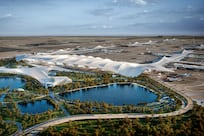Saudi Arabia, the world's top oil producer and Arab world's largest economy, will have an infrastructure investment gap of US$115 billion by 2040, as the country’s population becomes more urbanized, according to a new survey.
Infrastructure investments needed in the kingdom are forecast at $613bn, but current investment trends are estimated at $499bn, according to a Global Infrastructure Hub (GI Hub) and consultancy Oxford Economics report.
“This reflects the global trend which points to the road and electricity sectors requiring the greatest spending as the global population becomes increasingly urbanized,” said the report. “Urban population proportion in KSA (kingdom of Saudi Arabia) is also expected to increase from 83 per cent in 2015 to 94 per cent in 2040.”
Saudi Arabia is expected to meet 81 per cent of its infrastructure needs, particularly in airport, ports and roads sectors, according to the GI Hub, which was started in 2014 with a G20 mandate to increase the flow and the quality of opportunities for public and private infrastructure investment.
Globally, infrastructure investment needs are projected to reach $97 trillion by 2040, 19 per cent of which will be unfunded if current spending trends continue, according to the report.
The cost includes $94tn to help buoy global economic growth and close the funding gap, plus $3.5tn to meet the UN Sustainable Development Goals (SDGs) for universal household access to drinking water and electricity by 2030.
To close the gap, countries will need to increase annual infrastructure spend to 3.5 per cent of GDP from the current 3 per cent.
"Every year $3.7tn will need to be invested in infrastructure to meet the demands of an accelerating global population, the equivalent of the total annual GDP of Germany, the world's fourth largest economy," the report said. "This is not just a major challenge for emerging countries that need to create new infrastructure, but also for advanced countries that have ageing systems that have to be replaced."
The United States will have the largest gap in infrastructure spending at $3.8tn, but China will have the greatest demand of $28tn, accounting for 30 per cent of global needs.
"In fact, although China's need is more than double that of the US, spending gap in the US is twice the size of China's," said the report.
Asia accounts for the lion’s share of investment needs, or 55 per cent of the $94tn.
China, India and Japan represent 40 per cent of the total investment, with China and Japan forecast largely to meet their needs.
With regards to sectors, the electricity segment is forecast to have the second largest gap at $2.9tn, with the majority of that gap in developing and emerging countries.





